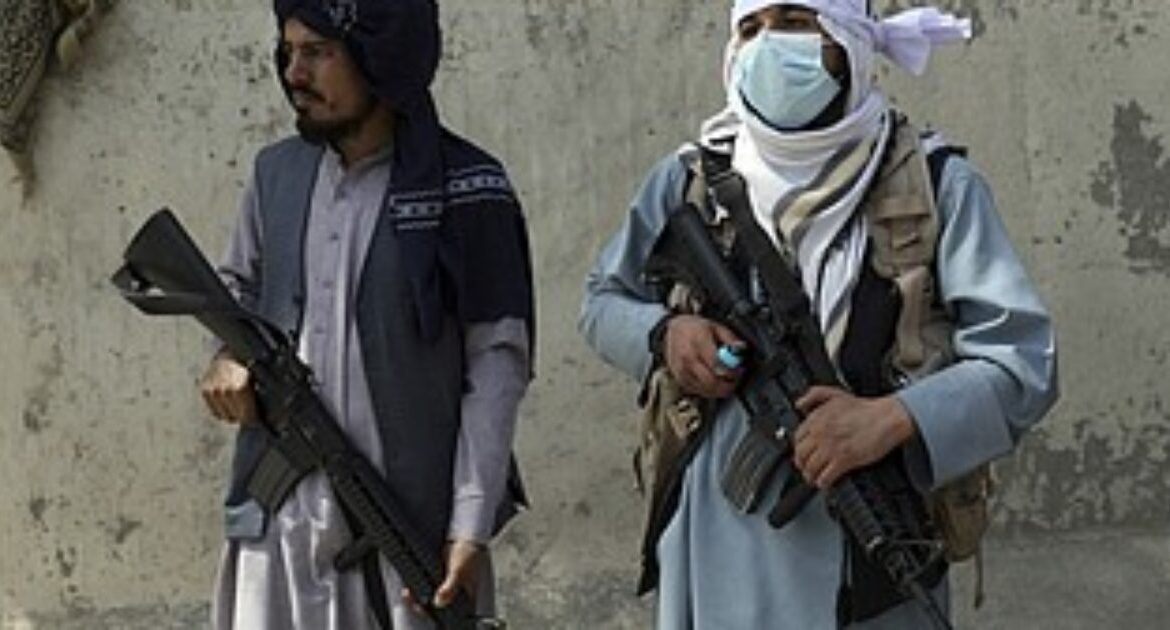
Biden’s Blunder, the Taliban, and U.S. Weapons: Trump Wants Them Back

In what may be one of the most devastating foreign policy failures in modern U.S. history, President Joe Biden’s reckless 2021 withdrawal from Afghanistan did not simply leave a power vacuum, it handed America’s enemies one of the largest unauthorized arms transfers in history.
Today, billions of dollars in U.S. weapons and equipment are in the hands of terrorists, black market arms dealers, and hostile regimes.

According to the Special Inspector General for Afghanistan Reconstruction (SIGAR), the Taliban earned over $3.4 billion in revenue last year, partly by selling seized U.S. weapons to global terror networks. Groups such as al-Qaeda affiliates, ISIS-K, Tehreek-e-Taliban Pakistan (TTP), and others are actively using these weapons for attacks and training.
A recent BBC investigation revealed that half a million weapons captured by the Taliban are now unaccounted for—either lost, sold, or smuggled out.
The Taliban originally seized around one million items of U.S.-funded military hardware, including M4 and M16 rifles, Humvees, MRAPs, and even Black Hawk helicopters.
While much of the high-end equipment remains non-operational due to lack of training and maintenance capacity, thousands of vehicles and small arms have been deployed in combat or sold to the highest bidder.
The BBC confirmed that the Taliban admitted these weapons were missing during a closed-door UN meeting in Doha.
Despite Pentagon assurances that most equipment was disabled, the Taliban continues to flaunt U.S. hardware in military parades, most notably in August 2024, when they celebrated three years in power by showcasing captured gear at Bagram Airfield, once the main hub of U.S. and NATO operations.
Diplomats from China and Iran attended the parade, highlighting a new geopolitical reality: the U.S. is gone, and adversaries are taking its place.
Taliban leaders now view these weapons not just as tools of war but as symbols of legitimacy and power.
A black-market arms economy has emerged, with local commanders using WhatsApp to trade U.S. gear, often gifting weapons to consolidate control.
Even the United Nations noted that the Taliban allowed its regional commanders to keep 20% of all seized American weapons—further fueling fragmentation and underground trafficking.
President Trump, ahead of his second inauguration, blasted the Biden administration for handing over “$85 billion in weapons” to the Taliban.
While the exact value is debated, even conservative estimates peg the abandoned equipment at $7 billion or more, according to the Department of Defense.
Since resuming office, Trump has vowed to reclaim the gear, stating: “If we need to pay them, that’s fine—but we want our military equipment back.”
Yet the Taliban has refused, insisting the arms belong to the state. Spokesman Zabihullah Mujahid declared, “We seized these weapons from the previous administration and will use them to defend the country.”
Meanwhile, China and Russia have cautiously moved to expand their presence in Afghanistan, seeking to exploit the vacuum left by the U.S. withdrawal. Both countries have reopened embassies in Kabul and hosted Taliban delegations.
In 2023, China became the first country to accept credentials from a Taliban-appointed ambassador—an act of limited diplomatic recognition.
Russia, too, has kept channels open but, like China, stopped short of formally recognizing the Taliban as the legitimate government.
Though often described as eager to tap into Afghanistan’s estimated $1 trillion in untapped mineral reserves, including lithium, copper, and rare earths, neither China nor Russia has signed any major extraction agreements.
At most, a handful of non-binding MOUs have been floated, but none have resulted in actual mining operations.
The reasons are clear: Afghanistan remains too unstable, too underdeveloped, and too unskilled to support large-scale industrial extraction.
The rugged terrain, lack of roads and power infrastructure, and a complete absence of educated technical labor mean that any serious resource project would require foreign companies to build everything from scratch, at high cost and high risk.
Even China, known for braving hostile environments to secure strategic minerals, has held back. For both China and Russia, religious and cultural differences, along with the risk of jihadist spillover into their own Muslim regions, have further complicated relations.
Still, the Taliban continues to signal interest in aligning with anti-U.S. powers in hopes of securing legitimacy and investment.
Afghanistan may be drifting into the orbit of America’s adversaries, but for now, it remains a pawn, not a partner, in their broader geopolitical strategy.
To make matters worse, the U.S. oversight body SIGAR will shut down in 2026, eliminating the last official line of accountability for U.S. equipment and aid in the region.
Former SIGAR head John Sopko has argued that retrieving the weapons may not be financially feasible, but the strategic cost of leaving them in hostile hands is far more dangerous.
This is not just a policy failure. It is a long-term national security liability, one that continues to arm terrorists, embolden authoritarian states, and erode American influence across one of the world’s most volatile regions.
The post Biden’s Blunder, the Taliban, and U.S. Weapons: Trump Wants Them Back appeared first on The Gateway Pundit.
